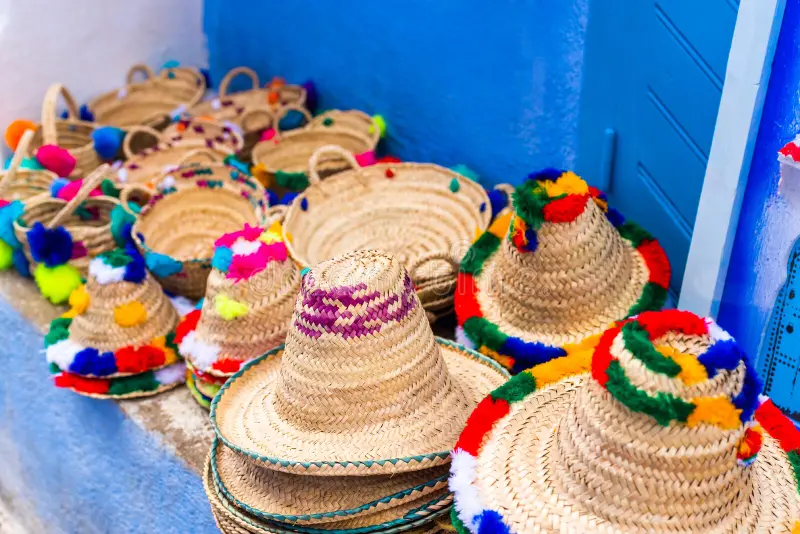
Traditional Moroccan Hat: A into Culture and Craftsmanship
Traditional Moroccan Hats: A Unique Blend of Style and Heritage
Introduction to Traditional Moroccan Hats
When you think of Moroccan culture, your mind might immediately wander to vibrant markets and intricate mosaics. However, one of the most striking aspects of Moroccan heritage is the traditional Moroccan hat. These hats are not merely fashion statements; they encapsulate centuries of history and craftsmanship that beg for exploration. Whether you are looking for a unique accessory or a piece of art, traditional Moroccan hats offer both aesthetic appeal and cultural significance.
The History Behind Traditional Moroccan Hats
The roots of traditional Moroccan hats can be traced back to the country’s rich history of trade and cultural exchange. His iconic headdresses reflect the influences of Berber, Arab, and other cultures that have melded together over the centuries. Initially used for practical purposes, these hats have evolved into symbols of status, tradition, and identity, embodying the spirit of Moroccan life.
Types of Traditional Moroccan Hats
The Fez
One of the most recognizable types of traditional Moroccan hats is the Fez, a cylindrical hat made from felt. This hat is often adorned with a tassel and is usually red, symbolizing the country’s independence. The Fez is a staple in Moroccan culture, historically worn by men of various ages and social classes.
The Tarbouche
The Tarbouche, also known as the Turkish hat, is another popular choice. This hat has a similar design to the Fez but often features a wider brim and is typically colored in shades of black, red, or white. It is often associated with formal occasions and conveys a sense of elegance.
The Chachat
The Chachat, worn primarily by Berber communities, is characterized by its unique fabric patterns and colors. This traditional Moroccan hat serves as a cultural emblem, celebrating the rich heritage of Morocco’s indigenous peoples. The Chachat is often made from handwoven materials, offering beauty and uniqueness to every piece.
The Craftsmanship of Traditional Moroccan Hats
Creating a traditional Moroccan hat is an art form that takes skill, time, and dedication. Artisans often hand-craft these hats using traditional techniques that have been passed down through generations.
- Materials: Most traditional Moroccan hats are made of high-quality wool or felt, chosen for durability and comfort.
- Weaving: The intricate patterns found on hats like the Chachat are woven by skilled weavers, reflecting the cultural history of the Berber tribes.
- Embroidery: Many hats feature beautiful embroidery which adds to their uniqueness and charm. These designs often have personal or cultural meanings, connecting the wearer to their heritage.
Cultural Significance of Traditional Moroccan Hats
In Morocco, hats serve more than just a functional role. They are deeply connected to identity and social status. For instance, wearing a Fez can indicate a person’s place within society or showcase their pride in Moroccan culture. Hats are integral in various ceremonies and festivals, symbolizing unity and cultural pride among the Moroccan people.
How to Style Traditional Moroccan Hats
Styling a traditional Moroccan hat is all about balancing tradition with modern trends:
- Casual Outfit: Pair a lightweight Chachat with a simple white shirt and denim jeans for a casual day out.
- Formal Attire: Wear the Fez with a tailored blazer and dress pants for formal occasions, highlighting its elegant nature.
- Accessories: Enhance your look with statement jewelry or a colorful scarf that complements the hat’s design.
Experiment with different combinations to find a style that allows you to express your personality while appreciating Moroccan craftsmanship.
Where to Buy Traditional Moroccan Hats
If you’re interested in purchasing a traditional Moroccan hat, there are various options available:
- Local Markets: Visiting Moroccan souks is an excellent way to find authentic hats. Here, you can observe artisans at work and select the perfect piece.
- Online Stores: Websites like Etsy or specialized Moroccan craft websites offer a selection of handmade hats that can be ordered from anywhere in the world.
- Cultural Festivals: Many cultural festivals features stalls where local artisans sell traditional crafts, offering an opportunity to buy directly from the makers.
Conclusion
Traditional Moroccan hats more than simple accessories; they represent a vibrant culture rich in history and artistry. From the Fez to Chachat, each hat carries with it a story waiting to be told. Next time you see a traditional Moroccan hat, think about its cultural significance and the craftsmanship that went into its creation. Consider how you might incorporate one into your wardrobe, contributing to the appreciation of this beautiful tradition. Whether for fashion or cultural exploration, the allure of traditional Moroccan hats remains timeless.
Feel free to ask questions or share your own experiences with traditional Moroccan hats in the comments below!


Add comment